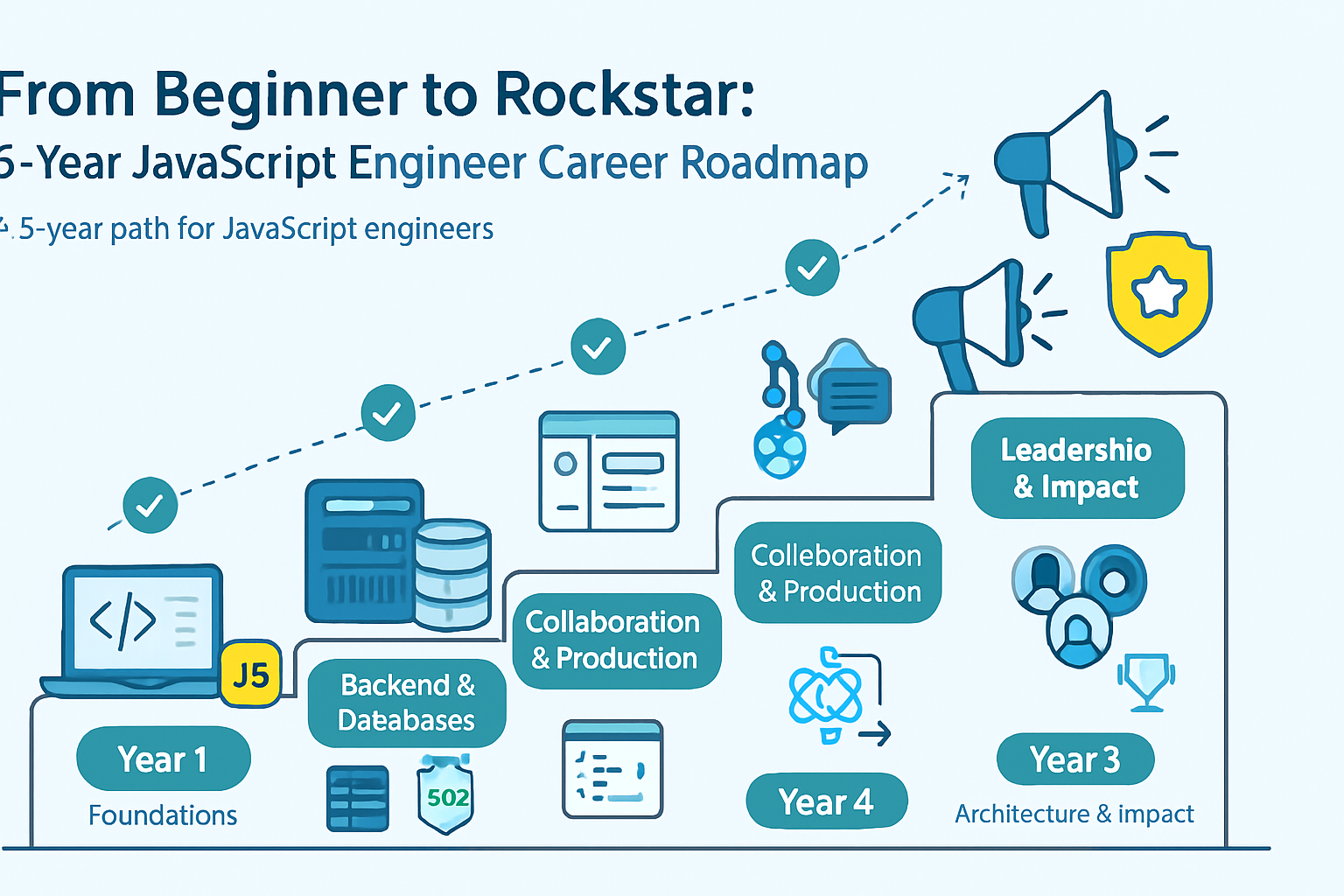· career · 5 min read
The Hidden Power of Keywords: Optimizing Your LinkedIn Profile as a JavaScript Engineer
Learn how to choose and place SEO-friendly keywords on your LinkedIn profile so recruiters and hiring engines find you more often - practical tips, examples, and a 30-day action plan tailored for JavaScript engineers.

Why keywords matter on LinkedIn (and why JavaScript engineers should care)
LinkedIn isn’t just a social network - it’s a searchable database recruiters and hiring tools query every day. The terms you use on your profile determine whether you appear in those searches. For a JavaScript engineer, well-chosen keywords move you from invisible to discoverable for roles like “React Developer,” “Node.js Engineer,” or “Front-end Performance Specialist.”
Search engines and LinkedIn’s internal search both rely on keyword matching, context, and relevance. That means words you use and where you place them (headline, About, experience bullets, skills) affect your ranking in recruiter results.
How recruiters and sourcing tools find candidates (quick primer)
- Recruiters often run boolean keyword searches (AND, OR, NOT) and filter by location, title, and experience.
- LinkedIn Recruiter and other ATS tools rank profiles based on exact term matches, related skills, and profile completeness.
- Variations and synonyms matter: a search for “React” might miss a profile that only lists “Front-end Engineer” unless other signals exist.
Understanding how search works helps you speak the language recruiters use. For background reading on keyword principles, see resources like Moz’s SEO guide on keywords and search fundamentals.
Keywords every JavaScript engineer should consider
Core technology keywords:
- JavaScript, ES6, ES7, ECMAScript
- Node.js, npm, yarn
- React, React Native, React Hooks, Redux
- TypeScript
- Vue.js, Angular (if applicable)
- Next.js, Gatsby
- GraphQL, REST APIs
- HTML5, CSS3, Sass, Styled Components
- Webpack, Babel, Vite
Testing/build systems & tooling:
- Jest, Mocha, Cypress, Playwright
- ESLint, Prettier, Storybook
- Docker, CI/CD, GitHub Actions, Jenkins
Focus areas / specialty keywords:
- Front-end Performance, Accessibility (a11y), Responsive Design
- Full-stack or Backend (if you do Node.js services)
- Microservices, Serverless, AWS Lambda
- Real-time (WebSockets), WebRTC
Role & seniority keywords:
- “Senior JavaScript Engineer”, “Lead Front-End Engineer”, “Full-Stack JavaScript Developer”, “Front-end Performance Engineer” or “React Developer” - include role variations and levels (Senior, Mid, Junior) you’re targeting.
Long-tail and context-rich phrases (helpful for boolean/semantic search):
- “React performance optimization”
- “TypeScript migration”
- “Node.js API design”
Where to place keywords on your LinkedIn profile
- Headline (prime real estate)
- Use a compact combination of role + core tech + specialty.
- Examples:
- Senior JavaScript Engineer | React · Node.js · Performance
- Front-End Engineer (React, TypeScript) - Accessibility & Performance
- About (formerly Summary)
- Write a human-first paragraph that naturally includes 6–12 strong keywords and 1–2 long-tail phrases.
- Put the most important keywords in the first 1–2 sentences (they get more weight).
- Experience (role titles and bullets)
- Use an accurate title but you can add clarifying text: e.g., “Software Engineer (React/Node.js)“.
- In bullets, describe achievements and include keywords tied to outcomes (e.g., “Improved Time to Interactive by 40% using code-splitting and web performance profiling.”)
- Skills & endorsements
- Add up to 50 skills - prioritize the top 10 with the most relevant keywords.
- Encourage endorsements for primary skills (endorsements help signal relevance to search algorithms).
- Projects, Certifications, Featured, Publications
- Add projects with keyword-rich descriptions and links to demos or GitHub.
- List certifications (e.g., AWS, Google, or vendor certificates) with the official names.
- Recommendations
- Recommendations that naturally mention skills or tech (e.g., “great at React and performance tuning”) further reinforce keywords.
- Custom URL & contact info
- Use a simple custom LinkedIn URL (e.g., /in/your-name-js) and include GitHub/portfolio links in the Featured section (these don’t affect LinkedIn search but help recruiters evaluate fit).
Good vs. bad keyword practice
Good:
- Natural language: write for humans first, search second.
- Use variations and synonyms: include both “JS” and “JavaScript”; “React” and “React.js”.
- Context: pair keywords with results (“reduced bundle size by 30% using tree-shaking and code-splitting”).
Bad:
- Keyword stuffing (repeating “JavaScript” dozens of times).
- Misleading keywords for roles you don’t perform.
- Overly generic statements without technical specifics.
Sample headline and About (for copy-and-paste use)
Sample headlines:
- Senior JavaScript Engineer | React · TypeScript · Node.js | Performance & Accessibility
- Front-End Engineer (React, Next.js) - UI Performance, A11y, Component Architecture
Sample About paragraph (mid-senior level):
I build fast, accessible front-end applications with React and TypeScript. I focus on measurable improvements - from reducing Time to Interactive with code-splitting and server-side rendering (Next.js) to improving accessibility scores and maintainability through component-driven design (Storybook) and TypeScript migrations. On the backend I build Node.js services and GraphQL APIs to support scalable single-page applications. Recent wins include leading a TypeScript migration across a 30-person product team and cutting load time by 40%.
(Keywords included naturally: React, TypeScript, Node.js, GraphQL, Next.js, Storybook, accessibility, performance, TypeScript migration)
Boolean search examples recruiters use (so you can mirror their language)
- Basic: “(React OR “React.js” OR “React Native”) AND (TypeScript OR “TS”) AND (Node OR “Node.js”)”
- Senior: ”(“Senior JavaScript” OR “Senior Front-End” OR “Principal Engineer”) AND (React OR Vue OR Angular)”
By aligning your phrasing with these patterns you increase the chance of a match.
Measuring success: what to track
- LinkedIn analytics: watch “Search appearances” and profile views (LinkedIn provides counts and some context).
- Interview/outreach rate: more recruiter messages is a direct signal your keywords are working.
- Endorsements and skills rank: see which skills appear in the top positions.
Make one change at a time (headline or About) and measure over 2–4 weeks so you can attribute movement to specific edits.
30-day action plan (practical checklist)
Week 1 - Audit & keywords
- Export a list of 20–30 keywords relevant to your skillset and target roles.
- Search LinkedIn for job descriptions and recruiter messages to find language recruiters use.
Week 2 - Implement core updates
- Update headline with strong role + tech.
- Rewrite About with the top 8–10 keywords in natural language.
- Update current position title to include clarifying tech details if helpful.
Week 3 - Expand proof & signals
- Add or update 3 projects with keyword-rich descriptions and links to demos/GitHub.
- Reorder top 10 skills and request endorsements from colleagues for the most important ones.
Week 4 - Test and measure
- Track search appearances, profile views, and outreach volume.
- Tweak headline or About if results are stagnant and repeat the cycle.
Avoiding pitfalls and staying honest
- Don’t misrepresent experience to game keyword matches - recruiters will check your code and references.
- Keep public repos and demo links up to date; keywords attract attention, your work must back them up.
- Be inclusive of variants (e.g., “a11y” and “accessibility”) so automated parsing doesn’t miss you.
Quick checklist (ready to use)
- Headline includes role + 1–3 primary tech keywords
- First 2 sentences of About contain core keywords
- Experience bullets mention concrete tools and measurable results
- Top 10 skills set and endorsed
- 2–3 featured projects with keyword-rich descriptions
- Recommendations that mention technical strengths
- Monitor LinkedIn “Search appearances” weekly
Resources and further reading
- LinkedIn Talent Solutions: https://business.linkedin.com/talent-solutions
- HubSpot guide: How to Optimize Your LinkedIn Profile - https://blog.hubspot.com/marketing/linkedin-profile-tips
- Moz: The Beginner’s Guide to SEO (keyword fundamentals) - https://moz.com/learn/seo/what-is-seo



